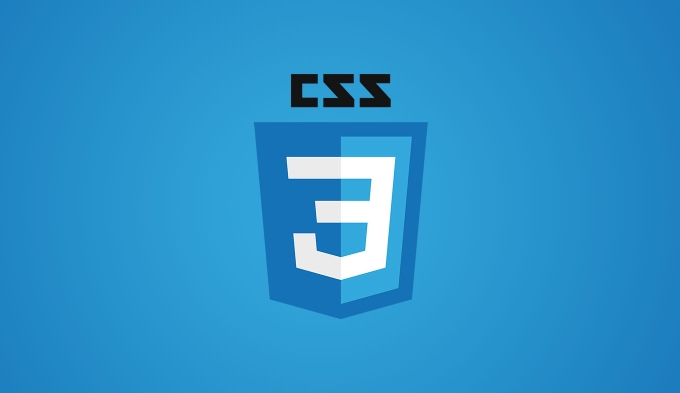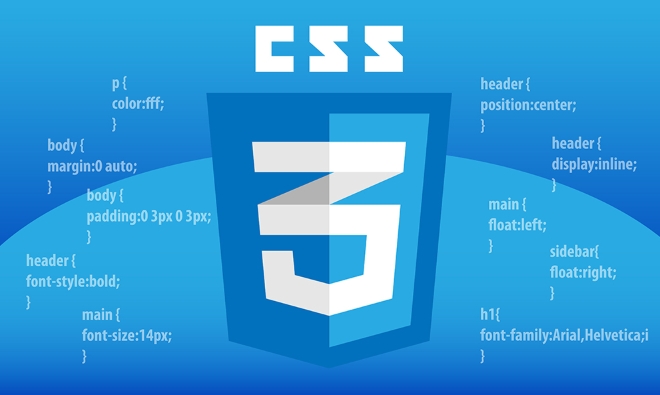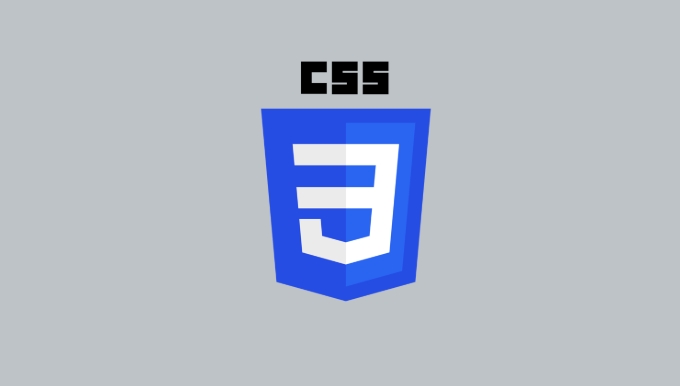Explain the different ways to specify colors in CSS (hex, rgb, hsl)
Jul 16, 2025 am 12:14 AMThere are three commonly used color representation methods in CSS: HEX, RGB and HSL. 1. HEX uses six-digit hexadecimal numbers to represent the color, starting with #, such as #FF5733, which is suitable for accurate color matching and easy to copy; 2. RGB controls the color through red, green and blue values, such as rgb (255, 87, 51), which is suitable for dynamic color adjustment and supports transparency settings; 3. HSL defines colors based on hue, saturation and brightness, such as hsl (20, 100%, 60%), which is convenient for adjusting tones and creating a consistent color scheme. Each format has its own advantages, and the choice depends on the specific requirements and usage scenarios.

When working with colors in CSS, you've got a few solid options to choose from — and each has its own strengths depending on what you're trying to do. The three most common methods are HEX, RGB, and HSL. Let's break them down so you know when and why you might use each one.

HEX color codes – simple and widely used
HEX is probably the most familiar format if you've worked with web design or picked colors using tools like Photoshop or Figma. It uses a six-digit hexadecimal number to represent a color.
- Starts with a
#symbol - Followed by 6 characters (0–9 and A–F)
- Example:
#FF5733
Each pair of characters represent red, green, and blue values respectively. So FF is the max value for red, 57 for green, and 33 for blue.

Why use HEX?
- Compact and easy to copy/paste
- Supported everywhere
- Great for exact color matching
One thing to note: it's not super intuitive for tweaking shades or adjusting brightness unless you're already comfortable reading hex values.

RGB – direct control over red, green, and blue
RGB stands for Red, Green, Blue, and in CSS you specify each component as a value between 0 and 255.
- Uses the
rgb()function - Example:
rgb(255, 87, 51)
You can also use percentages instead of numbers:
- Like this:
rgb(100%, 34%, 20%)
Why go with RGB?
- Easier to understand than HEX if you're thinking in terms of light mixtures
- Good for scripting or dynamic color changes in JavaScript
- You can use an alpha channel (
rgba()) to add transparency
Just keep in mind that older versions of CSS didn't support alpha in rgb() directly — that's where rgba() came in handy. But now, modern CSS lets you write rgb() with a fourth parameter for opacity using modern color syntax.
HSL – work with hue, satisfaction, and lightness
HSL stands for Hue, Saturation, Lightness. This model gives you more intuitive control over color relationships.
- Uses the
hsl()function - Example:
hsl(20, 100%, 60%)
Here's how it breaks down:
- Hue : a degree on the color wheel from 0 to 360 (red = 0°, green = 120°, blue = 240°)
- Saturation : percentage from 0% (grayscale) to 100% (fully saturated)
- Lightness : how bright the color is, 0% is black, 100% is white
Why HSL might be your go-to:
- Easier to tweak colors without guessing values
- Makes creating color variations (like lighter/darker tones) much more predictable
- Also supports alpha via
hsla()or newerhsl()with transparency
This format really shines when you're building themes or need consistent color palettes with slight variations.
So yeah, whether you stick with HEX for simplicity, go with RGB for scripting control, or use HSL for easier color adjustments — they all get the job done. It really depends on what you're building and how much flexibility you need.
Basically that's it.
The above is the detailed content of Explain the different ways to specify colors in CSS (hex, rgb, hsl). For more information, please follow other related articles on the PHP Chinese website!

Hot AI Tools

Undress AI Tool
Undress images for free

Undresser.AI Undress
AI-powered app for creating realistic nude photos

AI Clothes Remover
Online AI tool for removing clothes from photos.

Clothoff.io
AI clothes remover

Video Face Swap
Swap faces in any video effortlessly with our completely free AI face swap tool!

Hot Article

Hot Tools

Notepad++7.3.1
Easy-to-use and free code editor

SublimeText3 Chinese version
Chinese version, very easy to use

Zend Studio 13.0.1
Powerful PHP integrated development environment

Dreamweaver CS6
Visual web development tools

SublimeText3 Mac version
God-level code editing software (SublimeText3)
 How to change text color in CSS?
Jul 27, 2025 am 04:25 AM
How to change text color in CSS?
Jul 27, 2025 am 04:25 AM
To change the text color in CSS, you need to use the color attribute; 1. Use the color attribute to set the text foreground color, supporting color names (such as red), hexadecimal codes (such as #ff0000), RGB values (such as rgb(255,0,0)), HSL values (such as hsl(0,100%,50%)), and RGBA or HSLA with transparency (such as rgba(255,0,0,0.5)); 2. You can apply colors to any element containing text, such as h1 to h6 titles, paragraph p, link a (note the color settings of different states of a:link, a:visited, a:hover, a:active), buttons, div, span, etc.; 3. Most
 What is a stacking context?
Jul 27, 2025 am 03:55 AM
What is a stacking context?
Jul 27, 2025 am 03:55 AM
Astackingcontextisaself-containedlayerinCSSthatcontrolsthez-orderofoverlappingelements,wherenestedcontextsrestrictz-indexinteractions;itiscreatedbypropertieslikez-indexonpositionedelements,opacity
 Describe different CSS units and when to use them
Jul 27, 2025 am 04:24 AM
Describe different CSS units and when to use them
Jul 27, 2025 am 04:24 AM
In web development, the choice of CSS units depends on design requirements and responsive performance. 1. Pixels (px) are used to fix sizes such as borders and icons, but are not conducive to responsive design; 2. Percentage (%) is adjusted according to the parent container, suitable for streaming layout but attention to context dependence; 3.em is based on the current font size, rem is based on the root element font, suitable for elastic fonts and unified theme control; 4. Viewport units (vw/vh/vmin/vmax) are adjusted according to the screen size, suitable for full-screen elements and dynamic UI; 5. Auto, inherit, initial and other values are used to automatically calculate, inherit or reset styles, which helps to flexibly layout and style management. The rational use of these units can improve page flexibility and responsiveness.
 How to use the CSS backdrop-filter property?
Aug 02, 2025 pm 12:11 PM
How to use the CSS backdrop-filter property?
Aug 02, 2025 pm 12:11 PM
Backdrop-filter is used to apply visual effects to the content behind the elements. 1. Use backdrop-filter:blur(10px) and other syntax to achieve the frosted glass effect; 2. Supports multiple filter functions such as blur, brightness, contrast, etc. and can be superimposed; 3. It is often used in glass card design, and it is necessary to ensure that the elements overlap with the background; 4. Modern browsers have good support, and @supports can be used to provide downgrade solutions; 5. Avoid excessive blur values and frequent redrawing to optimize performance. This attribute only takes effect when there is content behind the elements.
 How to style links in CSS?
Jul 29, 2025 am 04:25 AM
How to style links in CSS?
Jul 29, 2025 am 04:25 AM
The style of the link should distinguish different states through pseudo-classes. 1. Use a:link to set the unreached link style, 2. a:visited to set the accessed link, 3. a:hover to set the hover effect, 4. a:active to set the click-time style, 5. a:focus ensures keyboard accessibility, always follow the LVHA order to avoid style conflicts. You can improve usability and accessibility by adding padding, cursor:pointer and retaining or customizing focus outlines. You can also use border-bottom or animation underscore to ensure that the link has a good user experience and accessibility in all states.
 What are user agent stylesheets?
Jul 31, 2025 am 10:35 AM
What are user agent stylesheets?
Jul 31, 2025 am 10:35 AM
User agent stylesheets are the default CSS styles that browsers automatically apply to ensure that HTML elements that have not added custom styles are still basic readable. They affect the initial appearance of the page, but there are differences between browsers, which may lead to inconsistent display. Developers often solve this problem by resetting or standardizing styles. Use the Developer Tools' Compute or Style panel to view the default styles. Common coverage operations include clearing inner and outer margins, modifying link underscores, adjusting title sizes and unifying button styles. Understanding user agent styles can help improve cross-browser consistency and enable precise layout control.
 How to create a dashed line with CSS?
Jul 28, 2025 am 03:34 AM
How to create a dashed line with CSS?
Jul 28, 2025 am 03:34 AM
Use the border attribute to set the dashed style to quickly create dotted lines, such as border-top:2pxdashed#000; 2. You can customize the appearance of the dotted line by adjusting the border width, color and style; 3. When applying the dotted line to dividers or inline elements, it is recommended to set height:0 or reset the default style of hr; 4. If you need to accurately control the length and spacing of the dotted line, you should use background-image and linear-gradient to cooperate with linear-gradient, for example, background:linear-gradient(toright, black33%, transparent33%) repe
 How to create a bouncing animation with CSS?
Aug 02, 2025 am 05:44 AM
How to create a bouncing animation with CSS?
Aug 02, 2025 am 05:44 AM
Define@keyframesbouncewith0%,100%attranslateY(0)and50%attranslateY(-20px)tocreateabasicbounce.2.Applytheanimationtoanelementusinganimation:bounce0.6sease-in-outinfiniteforsmooth,continuousmotion.3.Forrealism,use@keyframesrealistic-bouncewithscale(1.1






